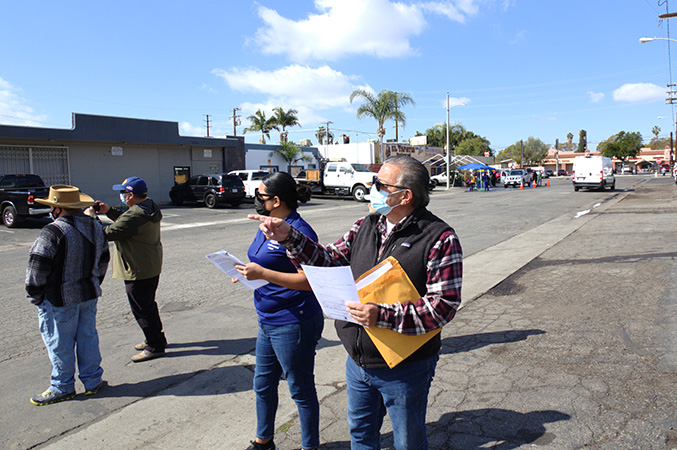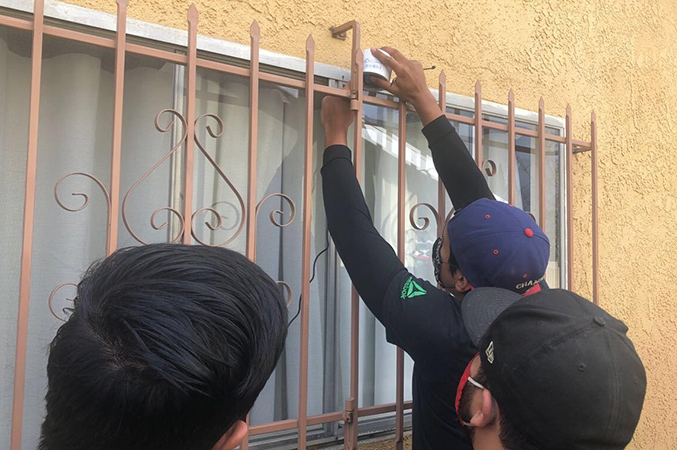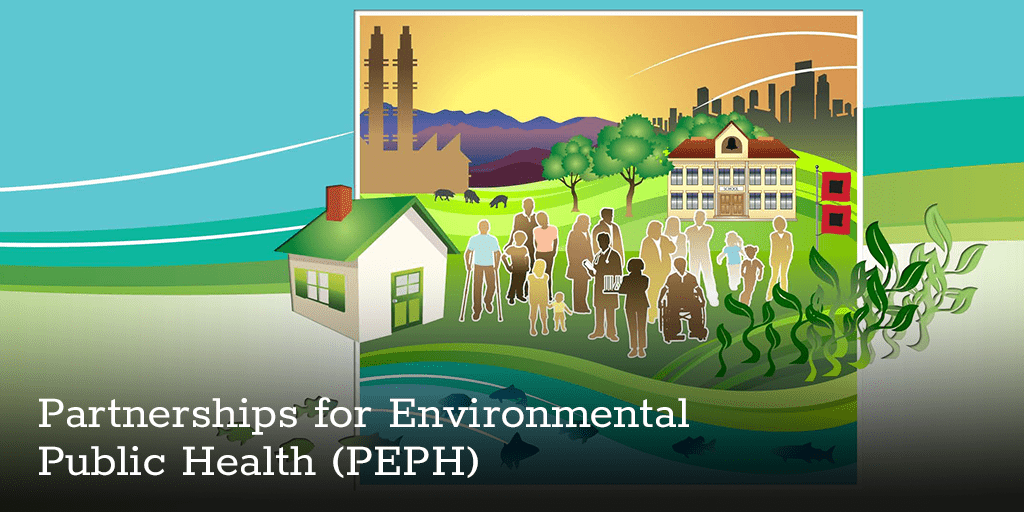Understanding the distribution of air pollution can help target policies and encourage other actions to reduce exposure. Often, communities experiencing disadvantages and more air pollution lack the air monitoring tools to effectively document pollutant levels.
A community organization in Santa Ana, California, has partnered with researchers at the University of California, Irvine to characterize disparities in local air pollution monitoring. Their disparities in access to air quality sensors and a community-engaged project to overcome gaps in air monitoring data are described in papers published in early 2022.
Residents Monitor Their Neighborhood
Residents of the Madison Park neighborhood in southeast Santa Ana, an immigrant, Hispanic/Latino, and low-income area, became concerned about their exposure to air pollution when they learned of a new metal plating facility moving into the area. This facility sparked residents to take action regarding their environmental exposures and health.
Neighbors began comparing their experiences with fumes, odors, and noise from local industries, as well as health problems like asthma. Although eager to address their health concerns, they were limited in understanding their exposure because of few air sensors in the area.
A local community organization, Getting Residents Engaged in Empowering Neighborhoods – Madison Park Neighborhood Association (GREEN-MPNA), convened a committee of adults and high school youth to investigate local environmental health risks. They named the group “Comunidad Unida, Aire Limpio” (Community United for Clean Air, or CUAL). With a grant from the California Air Resources Board, GREEN-MPNA undertook a three-year community science pilot project in which residents partnered with environmental health and social science researchers from the University of California, Irvine.
(Left) High school student volunteers gather at an air sampling event. (Right) Community partners stage a sampling event with instruction materials and supplies. (Photos courtesy of GREEN-MPNA)
GREEN-MPNA and their academic partners developed community workshops on environmental justice advocacy, community-based research, and air pollution health risks. Through these workshops and additional focus groups, the partnership identified three major research goals:
- Identify areas with high air pollution and its associated sources.
- Compare air pollution in the community to that of less disadvantaged communities near Madison Park.
- Understand the health effects of air pollution exposure in their neighborhood.
After forming the research questions, CUAL engaged with the researchers to develop and carry out the research plan.
First, researchers trained community volunteers on how to take samples with wearable air monitoring devices provided by the community air grant. Sampling took place three times per day (morning, midday, and evening) on one day per month for four months. CUAL members and other community volunteers walked or biked along assigned routes in the community to capture samples from areas of interest. Community members and researchers also developed a sampling plan to compare pollution from GREEN-MPNA’s areas of concern with pollution in neighboring areas in and around Santa Ana. To sample these other areas, they assigned locations to volunteers at varying distances from the focus area in Madison Park.
Performing community-based research using low-cost air monitors supported GREEN-MPNA’s main objectives of understanding the cumulative effect of breathing air from industrial sources and other polluting sources around the Madison Park neighborhood and of assessing how to improve the situation.
“Perhaps what is different about our approach is that it is from the bottom to the top. The real-world knowledge of the CUAL high school and adult residents paired with the university scientists’ knowledge will transform policy and systems,” stated Jose Rea, Executive Director of GREEN-MPNA.

Community partners take part in an air sampling event. (Photo courtesy of GREEN-MPNA)
The Community’s Air Monitoring Results
Sampling indicated that average air pollution levels for each sampling area were below federal regulatory standards, but researchers noted that some individual measurements were much higher than regulatory standards. The data showed that the industrial area and locations near freeways had the highest pollution levels. Wealthier neighboring communities had similar average pollutant levels but had fewer measurements above the regulatory benchmark than did the Madison Park neighborhood.
“We believe the frequency of measurements that exceeded the benchmark shows this community may have a higher pollutant burden than those nearby,” stated Shahir Masri, Sc.D., first author of this community academic study.
Going forward, researchers and community members hope to get access to air quality monitoring equipment to better understand air pollution patterns in the Madison Park area. Monitoring over time with additional sensors would show whether pollutants were violating standards. The community continues to advocate for policies to mitigate existing pollution sources and prevent new pollution sources while expanding access to air monitoring sensors in environmental justice areas. The researchers and GREEN-MPNA also plan to continue to work together to better understand the health effects of air pollution exposure in the community.
Disparities in Access to Air Pollution Sensors
As this community-academic study progressed, researchers wondered whether the total number of air monitoring sensors per neighborhood would follow boundaries of race and income throughout California as they did in Santa Ana. They examined placement patterns of a widely used, low-cost sensor that is often distributed through state-sponsored air monitoring programs. The sensors upload air quality and location data to an online platform. Researchers used CalEnviroScreen — a state-maintained mapping tool that tracks pollution and socioeconomic data — to compare sensor distribution with socioeconomic factors.

The same type of low-cost sensor as examined in the statewide study (PurpleAir) is placed outside a Santa Ana home by a GREEN-MPNA community partner as part of another project following the neighborhood study referenced in this article. (Photo courtesy of GREEN-MPNA)
Researchers found that disparities in air pollution data existed throughout the state. Wealthier areas across California had more sensors than low-income areas, and there was a clear relationship between sensor distribution and race. Except for Asian Americans, residents of color were more likely to live in areas with fewer air sensors compared to areas with mostly white residents. Strikingly, regions with higher air pollution measurements had fewer sensors than regions with less air pollution.
“Unfortunately, this is a common environmental justice pattern, where the areas that are most affected by environmental issues have the least number of resources to address them,” reflected Jun Wu, Ph.D., principal investigator of the project. “Wealthier residents are better equipped to buy their own sensors, but state funding has not addressed the gap for poorer areas that have more air pollution. We have been pleased to work with organizations who are meeting this challenge head-on through community-led air monitoring.”
Source link
www.niehs.nih.gov


